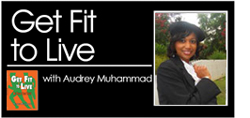As the BRICS countries—Brazil, Russia, India, China, and South Africa—met at a summit in Rio de Janeiro, U.S. President Donald Trump threatened to impose an additional 10 percent tariff on those nations he accused of being aligned with what he referred to as “anti-American” policies. BRICS has expanded to include Egypt, Ethiopia, Iran, Indonesia, and the United Arab Emirates.
In response to President Trump’s tariff threat, the Chinese foreign ministry responded, “BRICS is an important platform for cooperation among emerging markets and developing countries. It advocates openness, inclusiveness and win-win cooperation. It is not a bloc for confrontation. Nor does it target any country.”
“On the U.S. tariff hikes, China has made its position clear more than once. Trade war and tariff war have no winners, and protectionism leads nowhere,” Foreign Ministry Spokesperson Mao Ning said on July 7, reported the ministry’s English translation website, mfa.gove.cn.
“BRICS is a positive force in the world. It advocates openness, inclusiveness and win-win cooperation. It does not target any country. We oppose trade wars and tariff wars. Tariff(s) should not be used as a tool for coercion and pressuring. Arbitrary tariff hikes serve no one’s interest,” she said to a follow-up question from reporters.
---
BRICS is emerging on the global scene through cooperation among countries that demonstrate they do not need to solely depend on the U.S. for trade deals.
Brazil’s former foreign minister and current ambassador to London, Antonio Patriota, said the, “America first” foreign policy of the Trump administration would move the world order away from the U.S. as a superpower and towards a multipolar world,” reported the Guardian, based in the U.K.
“The U.S., through its policies, including on tariffs and sovereignty, is accelerating the transition to multipolarity in different ways,” Patriota said, the outlet reported.
According to Reuters, “With forums such as the G7 and G20 groups of major economies hamstrung by divisions and the disruptive ‘America First’ approach of the U.S. president, the BRICS is presenting itself as a haven for multilateral diplomacy amid violent conflicts and trade wars.” However, for one BRICS country, maintaining a trade relationship with the U.S. remains important.
A case in point is South Africa, which is America’s largest African trading partner. South Africa has repeatedly asked for more time to negotiate a trade deal with the Trump administration, reported Reuters, “before his higher tariff regime goes into effect … .”
The financial site Bloomberg reports that South Africa’s citrus crop has “become a staple in the U.S.—the world’s largest citrus importer—especially during the off-season summer months when in the southern hemisphere the South African winter harvest is at its peak.”
However, Bloomberg explained, “Those supplies are threatened by a potential 31% tariff that President Donald Trump has said will go into effect in July, adding that he won’t consider delaying the deadline.”
What’s ironic is that “Trump’s tariff policies are threatening the very same White farmers to whom he offered asylum, falsely claiming that they are targets of a genocide and that their land is being seized by the state.
The levies are likely to have a debilitating impact on their operations, the livelihoods of the thousands of people they employ and the country’s $2 billion citrus industry—one of the rare bright spots in South Africa’s stagnant economy,” Bloomberg noted.
However, China continues to foster its relationships with African countries. Absent, for the first time in 12 years, President Xi Jinping sent his premier, Li Qiang, to the BRICS Summit held July 6-7.
China is Africa’s largest trading partner. At a China-Africa co-operation meeting in June, the BBC reported that China “has said it is ready to drop the tariffs it charges on imports from all 53 African countries with which it has diplomatic relations.”
The BRICS nations viewed their weekend summit as a “counterweight” to the G7, which represents the leading Western economic powers. BRICS is now chaired by Brazil President Luiz Inacio Lula da Silva, and the combined populations of the countries represent nearly half of the world’s population.
While President Trump is threatening the Global South through BRICS with additional tariffs, Senegalese Prime Minister Ousmane Sonko has expressed concern about the “erosion of international norms and the growing tendency of some powerful countries to unilaterally impose their own rules,” according to the Global African Times.
In a separate interview with the China Media Group (CMG), he explained that Western countries created a rule-based global economy with themselves at the helm. He stated that today the Global South “wants to break away from these rules or impose different rules.”
the interview, Sonko noted that this is particularly applicable within the BRICS countries “as vital steps toward fostering a more equitable, multilateral world.”
“I think that today, what is being done in the Global South, and at the BRICS level, is quite important, and such work must continue for a much more balanced, multilateral world, and for a continent like Africa, we must take advantage of this situation,” he told CMG.















